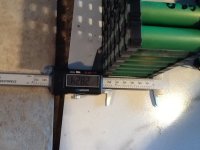snath
100 W
opz.EST said:Awesome idea, great build!
Here is my 2 cents in the picture...
Waiting for spacers 12s8p but cannot buy closedcell compressing foam... Can someone send me stripes for my battery in envelope? I am in EU. PM
Thank you
opzopus
Nice job. Should work fine.
You may wish to use a 'washer-head" screw to control dimple depth. In use, the flange on the screw head in contact with the washer under the strip would ensure dimples of the same depth.
Flange head screw images here: https://www.google.com/search?q=was...-IKS30AGk7IGICg&ved=0CD8QsAQ&biw=1310&bih=602


